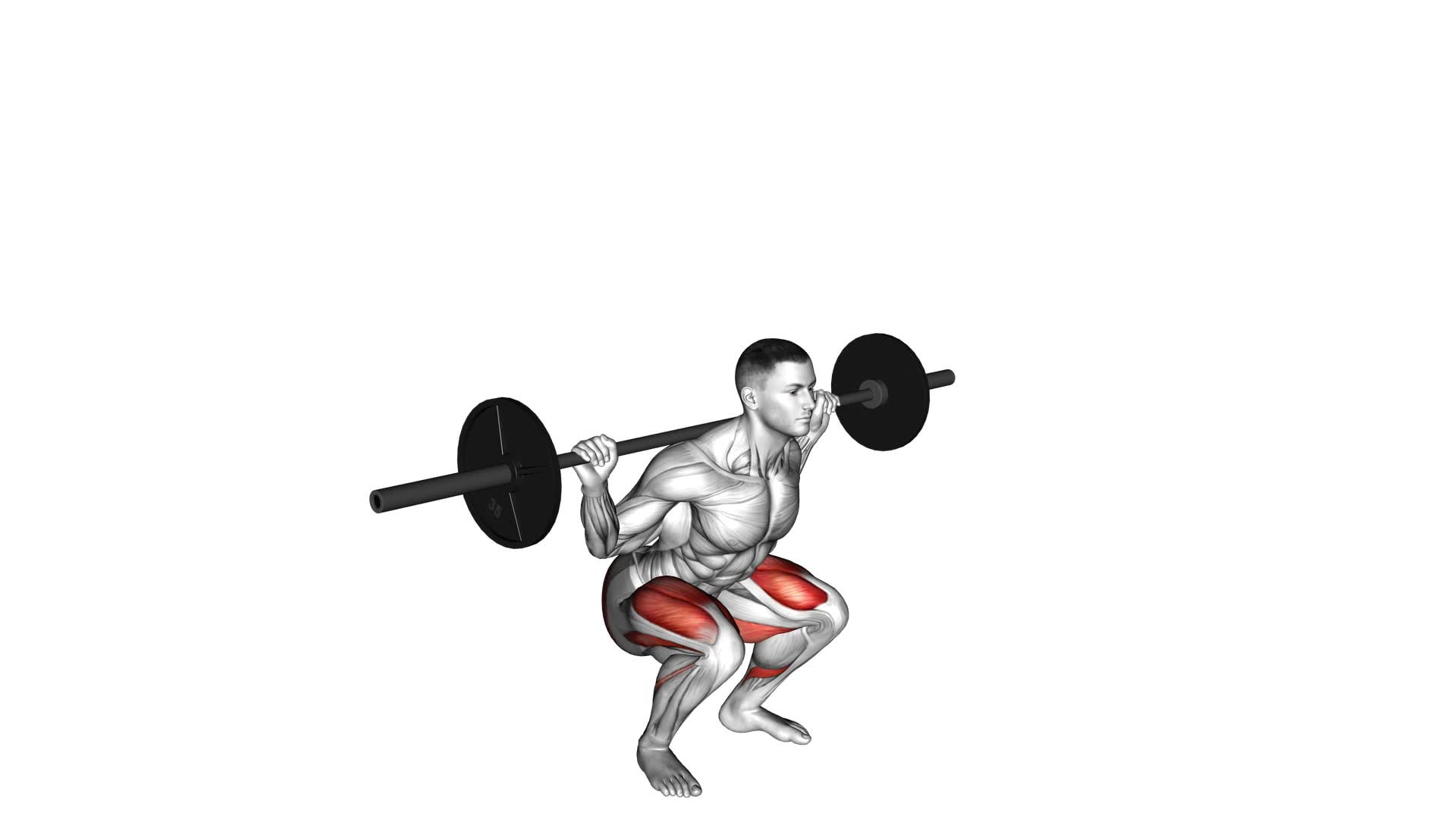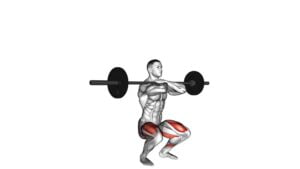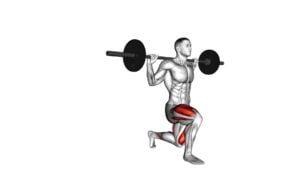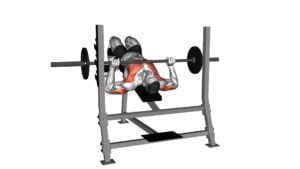Barbell Pause Full Squat – Video Exercise Guide & Tips

Get ready to take your squat game to the next level with the barbell pause full squat! In this video exercise guide, we'll show you the proper form and technique to maximize your gains.
Watch This Exercise Video
You'll learn the benefits of incorporating this challenging variation into your routine and how to avoid common mistakes.
With variations and progressions to suit your fitness level, this exercise is perfect for building strength and muscle.
Let's dive in and get squatting!
Key Takeaways
- Engages multiple muscle groups including quadriceps, hamstrings, glutes, and core
- Strengthens and stabilizes joints, reducing the risk of injuries
- Increases time under tension, leading to greater muscle activation and growth
- Enhances mobility, stability, and balance
Benefits of Barbell Pause Full Squat
Experience the numerous benefits of the Barbell Pause Full Squat by incorporating this challenging exercise into your workout routine. The Barbell Pause Full Squat isn't only an effective way to build strength and muscle, but it also offers several other advantages.
One major benefit is injury prevention. By performing this exercise, you engage multiple muscle groups, including your quadriceps, hamstrings, glutes, and core, which helps to stabilize and strengthen your joints. Stronger joints are less prone to injuries, making the Barbell Pause Full Squat a valuable addition to any training program.
Another advantage of this exercise is its ability to activate and target specific muscles. As you lower into the squat position and pause, you engage your muscles in a stretched position. This deep squat activates your glutes and hamstrings, helping to develop strength and power in these areas. Additionally, the pause at the bottom of the squat allows for increased time under tension, leading to greater muscle activation and growth.
With the benefits of injury prevention and muscle activation, the Barbell Pause Full Squat is a must-try exercise for anyone looking to enhance their lower body strength and overall fitness.
Now, let's move on to the equipment and setup for the Barbell Pause Full Squat.
Equipment and Setup for Barbell Pause Full Squat
To properly set up for the Barbell Pause Full Squat, you'll need a barbell and a squat rack. These are essential pieces of equipment for this exercise. The barbell is the main tool you'll use to perform the squat, and the squat rack provides a stable and secure platform for you to lift the barbell.
When selecting a barbell, make sure it's the appropriate weight for your fitness level and goals. It should also have a good grip and be comfortable to hold. The squat rack should be sturdy and adjustable to accommodate your height and range of motion.
To set up for the Barbell Pause Full Squat, start by positioning the squat rack at a suitable height. The barbell should be at chest level, allowing you to easily lift it off the rack. Grip the barbell with your hands slightly wider than shoulder-width apart, and place it on your upper back, resting it across your trapezius muscles.
Ensure your feet are shoulder-width apart, toes slightly angled outwards. Take a deep breath, brace your core, and engage your leg muscles. Lower your body down into a squat position, keeping your chest up and your knees in line with your toes. Pause momentarily at the bottom of the squat, then push through your heels to stand back up and repeat the movement.
Remember to always use proper form and technique when performing the Barbell Pause Full Squat to avoid injury and maximize the benefits of the exercise.
Proper Form and Technique for Barbell Pause Full Squat
To perform the Barbell Pause Full Squat with proper form and technique, you should focus on maintaining a stable core and controlled movement throughout the exercise.
This exercise offers several benefits, including improved squat technique and increased lower body strength.
When performing the Barbell Pause Full Squat, start by standing with your feet shoulder-width apart and the barbell resting on your upper back. Lower your body down into a squat position, ensuring that your knees track in line with your toes and your hips are pushed back. As you reach the bottom of the squat, pause for a moment before driving through your heels to return to the starting position.
Throughout the movement, keep your core engaged and your back straight to maintain proper form. By incorporating the Barbell Pause Full Squat into your workout routine, you can enhance your squat technique and develop stronger leg muscles.
Now let's explore some common mistakes to avoid in the barbell pause full squat.
Common Mistakes to Avoid in Barbell Pause Full Squat
When performing the barbell pause full squat, it's important to avoid common mistakes that can hinder your progress.
Two common mistakes to watch out for are improper knee alignment and insufficient depth control.
Improper knee alignment can put unnecessary strain on your joints, while insufficient depth control can limit the effectiveness of the exercise.
Be mindful of these mistakes and focus on maintaining proper form to maximize your results.
Improper Knee Alignment
Avoid allowing your knees to collapse inward during the Barbell Pause Full Squat. Improper knee alignment can lead to knee pain and increase the risk of injury. To prevent this, make sure to keep your knees in line with your toes throughout the movement.
When your knees collapse inward, it puts excessive stress on the ligaments and tendons surrounding the knee joint, which can result in discomfort and potential injury.
To maintain proper knee alignment, engage your glutes and abductors, the muscles on the outside of your hips, to keep your knees in line with your toes. This will help distribute the load evenly and protect your knees during the Barbell Pause Full Squat.
Insufficient Depth Control
Maintain control over the depth of your squat to avoid insufficient depth in the Barbell Pause Full Squat, ensuring proper engagement of the muscles and maximizing the benefits of the exercise. Insufficient depth control can lead to decreased muscle activation and limit the effectiveness of the squat.
To improve your squat form and achieve the appropriate depth, there are a few key techniques to keep in mind. First, focus on maintaining a neutral spine throughout the movement, avoiding excessive rounding or arching of the back.
Additionally, engage your core muscles to provide stability and control during the descent and ascent.
Lastly, practice proper breathing techniques, inhaling deeply before descending and exhaling as you push up.
Variations and Progressions for Barbell Pause Full Squat
To progress your Barbell Pause Full Squat, you can try incorporating various modifications and advancements into your routine. One variation you can try is the Front Squat, where you hold the barbell in front of your shoulders instead of on your back. This variation targets your quadriceps and core muscles even more intensely.
Another variation is the Overhead Squat, where you hold the barbell overhead while performing the squat. This variation not only strengthens your legs but also improves shoulder stability and mobility.
To further challenge yourself, you can progress to performing the Barbell Pause Full Squat with heavier weights. Gradually increase the weight of the barbell as you become stronger and more comfortable with the exercise. You can also increase the duration of the pause at the bottom of the squat to enhance muscle endurance and control.
Incorporating these variations and progressions into your routine will help you continually challenge your muscles and make progress in your strength and fitness goals.
Now, let's move on to the next section to learn some tips for incorporating the Barbell Pause Full Squat into your workout routine.
Tips for Incorporating Barbell Pause Full Squat Into Your Workout Routine
Continue challenging your muscles and making progress in your strength and fitness goals by incorporating the Barbell Pause Full Squat into your workout routine. This exercise is a great addition to any HIIT (High-Intensity Interval Training) workouts and offers numerous benefits for strength training.
To incorporate the Barbell Pause Full Squat into your HIIT workouts, start by adding it as a compound movement in your lower body routine. Begin with a light weight and gradually increase the load as you become more comfortable with the exercise. Aim for 3-4 sets of 8-10 repetitions, with a pause at the bottom position for 2-3 seconds.
The benefits of the Barbell Pause Full Squat for strength training are immense. It targets multiple muscle groups, including the quadriceps, hamstrings, glutes, and core. By pausing at the bottom position, you increase time under tension, which enhances muscle growth and strength gains. This exercise also improves mobility, stability, and balance.
When performing the Barbell Pause Full Squat, remember to maintain proper form. Keep your chest up, core engaged, and knees aligned with your toes. Control the descent and ascent of the movement, and avoid bouncing at the bottom position.
Incorporating the Barbell Pause Full Squat into your workout routine won't only challenge your muscles but also help you achieve your strength and fitness goals. So, embrace this exercise and enjoy the benefits it brings to your training.
Frequently Asked Questions
How Many Sets and Reps Should I Do for the Barbell Pause Full Squat?
For the barbell pause full squat, you might be wondering how many sets and reps you should do.
The optimal training frequency for this exercise depends on your goals and experience level.
Beginners can start with 2-3 sets of 8-12 reps, while more advanced lifters can aim for 3-4 sets of 6-8 reps.
As you progress, you can increase the weight or try variations like front squats or Bulgarian split squats to challenge your muscles even more.
Can I Substitute the Barbell With Dumbbells for This Exercise?
Yes, you can substitute the barbell with dumbbells for the barbell pause full squat. Dumbbell variations of this exercise can provide a similar level of intensity and target the same muscle groups.
By holding a dumbbell in each hand, you can still perform the squat motion with a pause at the bottom. This can help improve your strength, stability, and overall lower body development.
Make sure to choose a weight that challenges you appropriately.
Is It Safe to Perform the Barbell Pause Full Squat if I Have Knee or Lower Back Issues?
If you have knee or lower back issues, it's important to consider modifications or alternatives for the barbell pause full squat. This exercise can put strain on those areas, potentially worsening your condition.
It's crucial to listen to your body and prioritize safety. Consult with a fitness professional or physical therapist who can provide you with suitable modifications or alternative exercises that won't aggravate your knee or lower back issues.
What Muscles Does the Barbell Pause Full Squat Primarily Target?
The barbell pause full squat primarily targets multiple muscles in your body. It's an effective exercise for strengthening your quadriceps, hamstrings, glutes, and calves. Additionally, it engages your core muscles, including your abs and lower back.
Performing this exercise with a barbell allows you to add resistance, increasing the benefits and challenging your muscles even more. There are also variations of this exercise that can target different muscle groups or add variety to your workout routine.
How Long Should I Pause at the Bottom of the Squat Position During the Exercise?
To get the most out of the barbell pause full squat, it's important to know how long to pause at the bottom of the squat position.
The benefits of pausing at the bottom include increased muscle activation and improved stability.
However, there's no set time for how long you should pause. It's best to listen to your body and pause for as long as you feel comfortable.
Just make sure to maintain proper form throughout the exercise to avoid injury.
Conclusion
Incorporating the barbell pause full squat into your workout routine can provide numerous benefits, including increased lower body strength and improved stability.
By following proper form and technique, you can maximize the effectiveness of this exercise and avoid common mistakes.
Additionally, there are variations and progressions available to challenge yourself as you become more proficient.
So, grab a barbell and start reaping the rewards of the barbell pause full squat in your fitness journey.

Author
Years ago, the spark of my life’s passion ignited in my mind the moment I stepped into the local gym for the first time. The inaugural bead of perspiration, the initial endeavor, the very first surge of endorphins, and a sense of pride that washed over me post-workout marked the beginning of my deep-seated interest in strength sports, fitness, and sports nutrition. This very curiosity blossomed rapidly into a profound fascination, propelling me to earn a Master’s degree in Physical Education from the Academy of Physical Education in Krakow, followed by a Sports Manager diploma from the Jagiellonian University. My journey of growth led me to gain more specialized qualifications, such as being a certified personal trainer with a focus on sports dietetics, a lifeguard, and an instructor for wellness and corrective gymnastics. Theoretical knowledge paired seamlessly with practical experience, reinforcing my belief that the transformation of individuals under my guidance was also a reflection of my personal growth. This belief holds true even today. Each day, I strive to push the boundaries and explore new realms. These realms gently elevate me to greater heights. The unique combination of passion for my field and the continuous quest for growth fuels my drive to break new ground.







